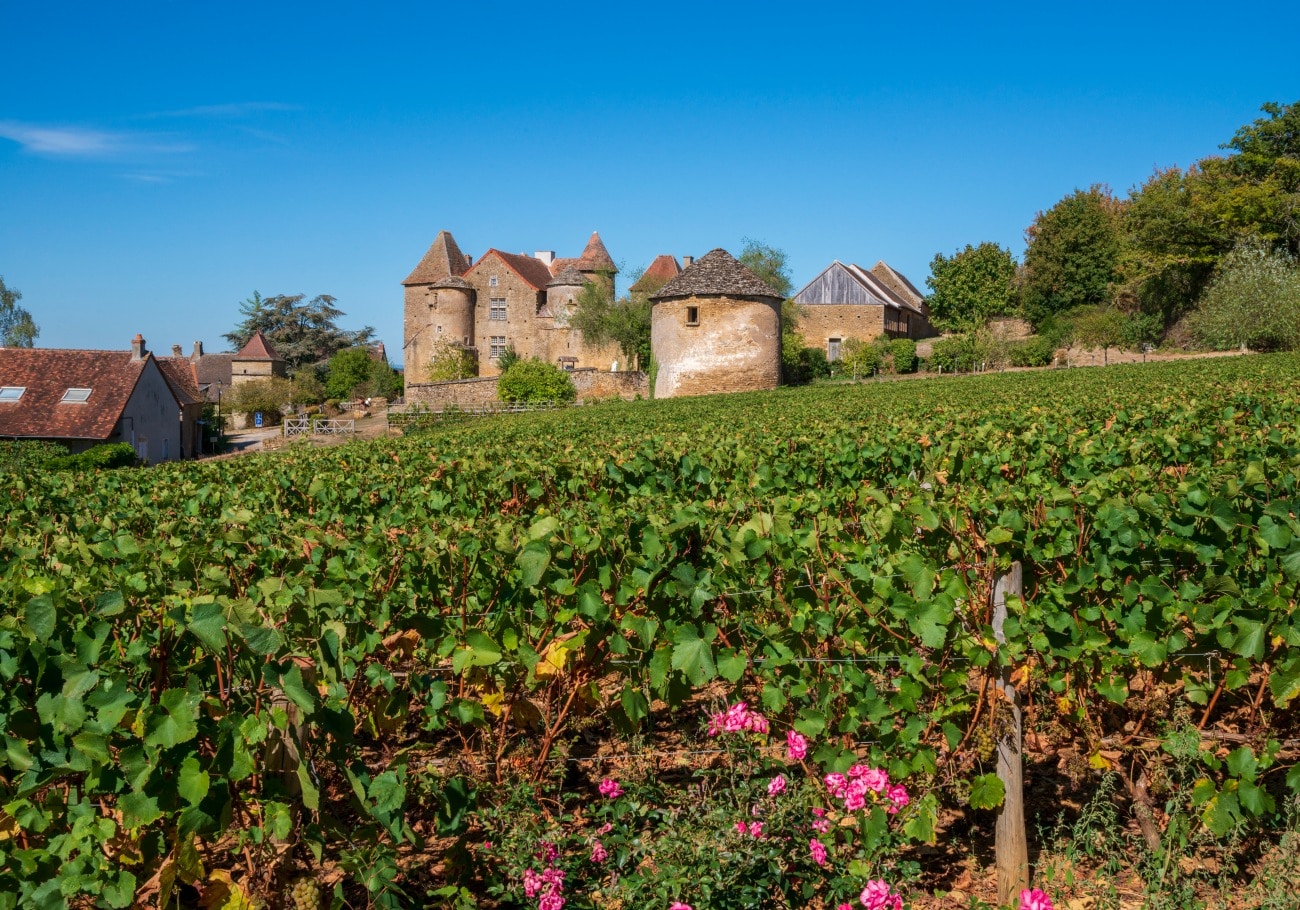The serious looking Maître d′ is skilfully balancing my plate through the restaurant at Château Sainte Sabine and it appears as if he’s about to place a diamond in front of me, a real treasure. I swallow and hesitate for a split-second over my choice of entrée, then dig into my first ever meal of snails. Until recently, I would never have eaten creatures that roam my garden though looking at the sorry state of my radishes they like to gnaw on, maybe I should.
A Local Delicacy
I’ve traveled to Burgundy, in the heart of France, which combines the French joie de vivre with a gently rolling landscape, centuries-old castles, quaint villages, world-class wines and outstanding cuisine. Dijon mustard comes from here, so do Beef Bourguignon, Burgundy truffles and Mâconnais cheese.
But do the locals really eat snails or is this something for posh restaurants only? “Oh, no,” laughs Véronique Beigenger, my pal from Burgundy Tourism. “My whole family goes snail hunting. It’s strictly controlled in terms of the timing and the size of the gastropods. There are countless recipes with herbs and butter, cheese or wine and they’re just delicious but it’s messy preparing them.”
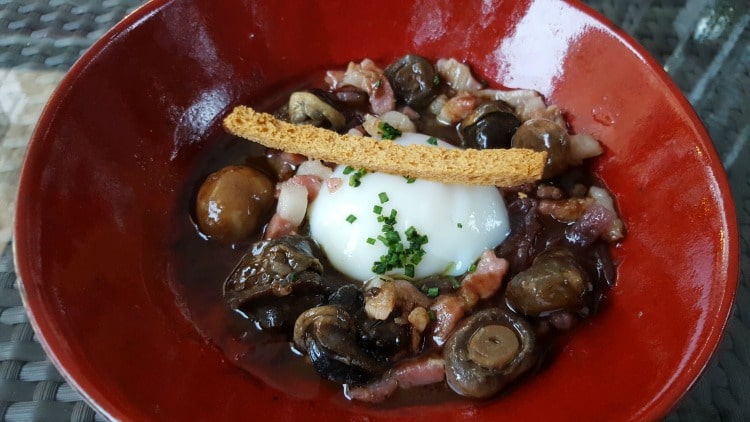
Slowing Down
Burgundy is a place to exhale, to take a break from your job, the big city, the daily grind. Life moves at a slower pace here and the French saying pour vivre heureux, vivons cachés (to live happily, live hidden), couldn’t express the local sentiment any better.
“I love having breakfast outdoors, listening to the birds, the solitude”, says English sculptor Paul Day who created the 30 ft high The Meeting Place in London’s St. Pancras Station. While he travels around the world for work to places like China, Russia or New Zealand, he’s still calling Burgundy home after sixteen years and wouldn’t have it any other way.
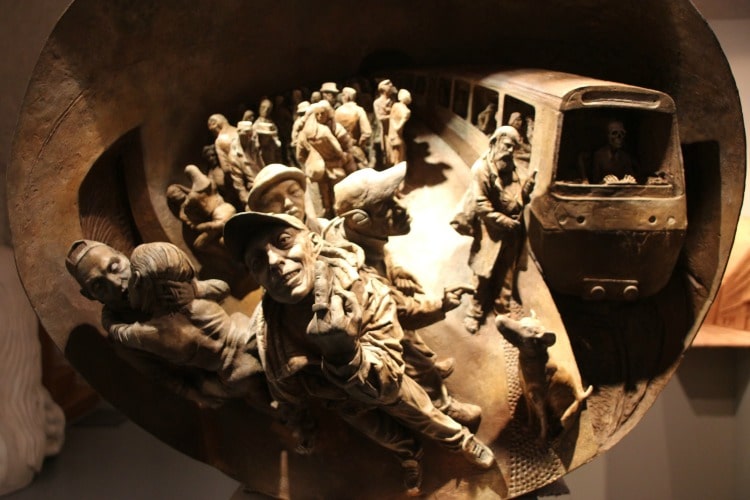
Portraits of History
While the region is only some 3.5 hours by car from Paris, in the 17th century, that meant light-years away, or so it seemed to Roger de Rabutin, Comte de Bussy. Author of Histoire Amoureuse des Gaules, a satiric account of court love affairs, he was exiled for seventeen years by King Louis XIV. His aristocratic residence, Château de Bussy-Rabutin, is famous for its collection of over 300 portraits including generals, warriors and court ladies.
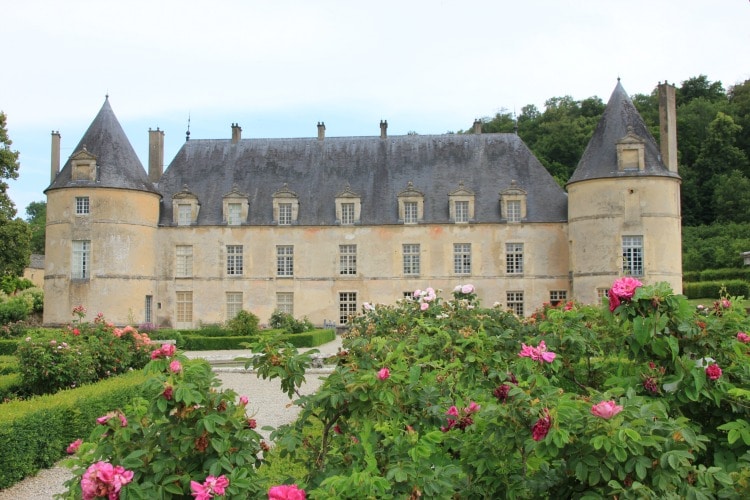
“You need to look closely as some of the paintings have a deeper meaning,” explains history professor Didier Doré while pointing to a rather literal depiction of a woman weighing less than nothing in a balancing scale. “This one is called Levior aura – or lighter than the wind, and depicts Roger de Rabutin’s lover Cécile, Marquise de Montglas, who left him when he was exiled.”
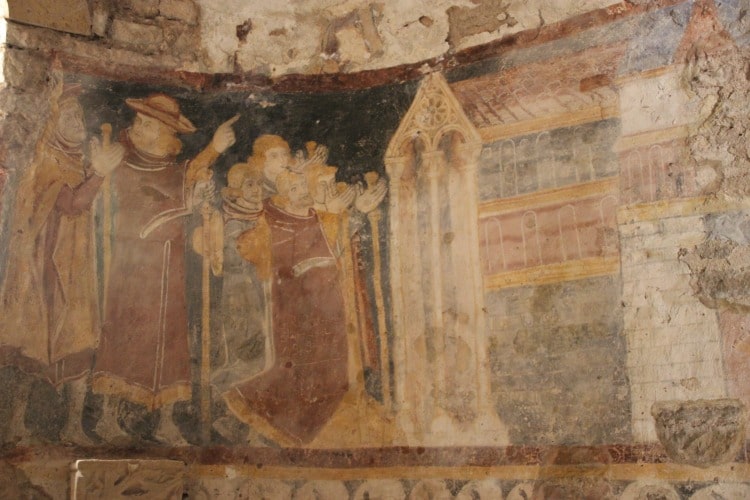
Historic Architecture
There are more châteaux in Burgundy than any other region in France. Nearly 100 castles, medieval strongholds and manor houses of every architectural style, dot the landscape from Vézelay to Cluny. It’s impossible to see them all but some have been converted to small luxury hotels such as Château d’Igé where I’m spoiled with award-winning cuisine (more snails, this time in red wine) and a good night’s sleep in a 13th-century castle.
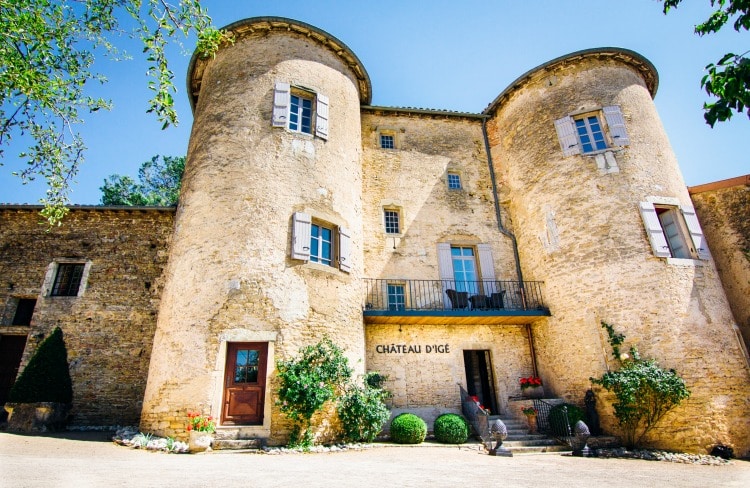
Next morning, I drive through vineyards and villages with narrow lanes, past rosebush-clad houses and old gurgling fountains. Occasionally, a château, often seeming privately owned, comes into view – it just doesn’t get more idyllic than that.
From the 13th to the 15th centuries, the village of Brancion was an important regional center for the Dukes of Burgundy and many buildings date from that epoch. “Its location on a hilltop meant that the ruling family became rich by ambushing pilgrims on the way to Cluny”, explains guide Leslie Cleaver. Today, there are only about one hundred residents left though it is a popular destination especially for families because of the craft fairs. A hidden gem is the Romanesque church of St. Peter with its wall paintings from 1325. Service is still being held occasionally in the dark and somewhat damp building but there is an increasing shortage of priests, mentions Cleaver.
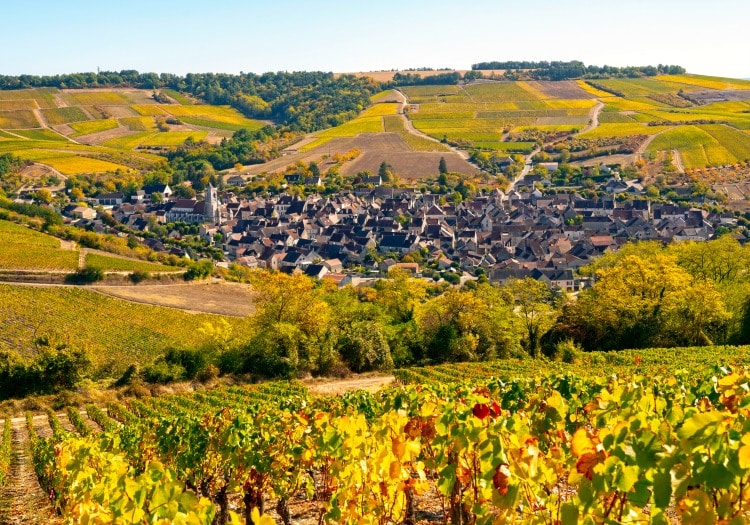
Another, much larger church of the same architectural style, the Abbey of Saint Philibert, is in nearby Tournus but I’m more interested in the town’s Hôtel-Dieu. Built in 1675 with money from a benefactor, this hospital, with three long rooms for the sick, is not afraid to compete with that of Beaune’s. The beds are original as is the furniture and equipment in the 17th-century apothecary. The hospital remained open as a convalescent home until 1981 simply because the last residents enjoyed the communal rooms and refused to move.
Sampling Local Wines
After my morning of local history, I drop into the Domaine de L’Echelette for a wine tasting with second-generation owner Guillaume Champliaud who looks after the 120,000-bottle vineyard. There are three things I learn during the quick stopover. One, Chardonnay is named after a Burgundy village, two, local wine pairs best with Comté cheese and three, in France, fromage is eaten before dessert (a sure way to spot tourists like me who usually eat cheese last).
Bourgogne wines have a long and rich history spanning 2,000 years with the best grapes growing between Dijon and Beaune. They are a legacy of the Benedictine and Cistercian monks who planted many vines in the Middle Ages.
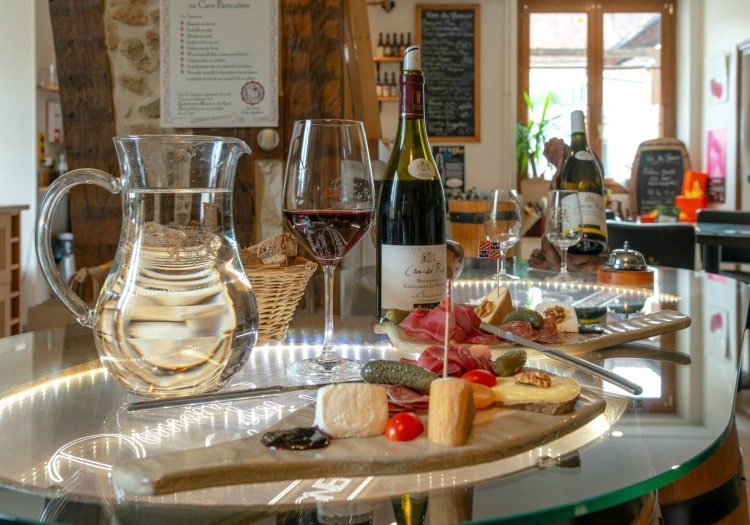
Cluny Abbey
The most influential abbey of the region was the one in Cluny. Founded in 910, it reached its height of power in the 11th and 12th centuries when it was the mother house for over 1,000 monasteries from Portugal to Scotland.
Today, only a fractional 8% of the once huge abbey complex remains yet it still feels imposing and impressive. Numerous monastic buildings are spread throughout town but with 3-D technology and a tablet in hand I can visualize from the platform of the Tour des Fromages (named because cheese was stored here in the 19th century) how the abbey looked in the 12th century.
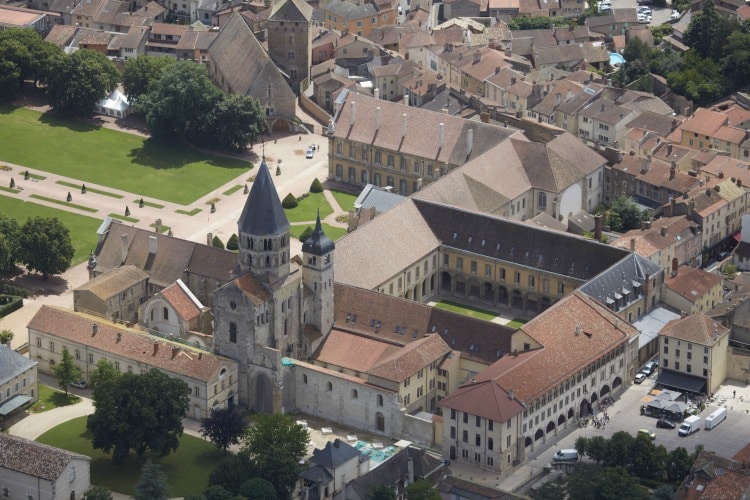
From high up I can scan far across the Burgundy landscape and then much closer, the locals sitting outside small bistros, delicious food and a glass of wine in hand. They all look relaxed as if nobody must return to work, simply enjoying life, la vie en Bourgogne.
[alert type=white]
The country code for France is 33.
Where to Stay:
Château Sainte Sabine – Built on the foundations of an abbey, this 15th-century château is in the heart of a large park with free-roaming deer. Close by are prestigious vineyards, the canal de Bourgogne, and Châteauneuf or Fontenay abbey. 8, route de Semur, Sainte-Sabine; +33 3 80 49 22 01; www.saintesabine.com/en
Château d’Igé – The 13th-century castle features 10 rooms and seven suites (some in the castle towers) as well as award-winning dining. Surrounded by wild gardens and with its own swimming-pool, Château d’Igé is a haven of greenery. 252 Rue du Château, Igé; +33 3 85 33 33 99; www.chateaudige.com/en
Château de la Barge – Located in a magnificent setting in the heart of the Mâcon vineyards, Château de la Barge dates to 1679. The restaurant serves regional specialties like Charolais Beef Filet and the menu is complemented by an extensive wine list. 155 Route des Bergers, Crêches-sur-Saône, +33 3 85 23 93 23; www.chateaudelabarge.fr/en
Where to Eat:
Le Bouchon Bourguignon – Regional dishes are served here in a warm setting of rectangular tables and bistro chairs, the trademark of Yohann Chapuis, who takes inspiration from the Burgundy terroir. 1 rue Thibaudet, Tournus; +33 3 85 51 13 52; www.restaurant-greuze.fr
What to See & Do:
Château de Bussy-Rabutin – Tour this 12th-century castle in a magnificent wooded valley and marvel at the remarkable décor created by its owner, Roger de Rabutin, Comte de Bussy. 12 rue du Chateau, Bussy-le-Grand; +33 3 80 96 00 03; www.chateau-bussy-rabutin.fr/en
Tournus – One of France’s most important monastic towns stands within strong walls on the banks of the Saône. Built at the turn of the first Millennium, the abbey of Saint Philibert survived centuries of feudalism and the Wars of Religion. Also, drop into the Hôtel-Dieu, the town’s former hospital.
Vineyards – Southern Burgundy is famous for its Pinot Noir and Chardonnay grape varieties. Walk, cycle or drive through the vineyards in search of the perfect drop. Many producers like Domaine de L’Echelette open their cellars for drop-in visitors.
Cluny Abbey – The remains of Christendom’s largest church until the construction of St Peter’s Basilica in the Vatican are fragmentary and scattered throughout modern day Cluny. The best view of the abbey is from the Tour des Fromages.
[/alert]

